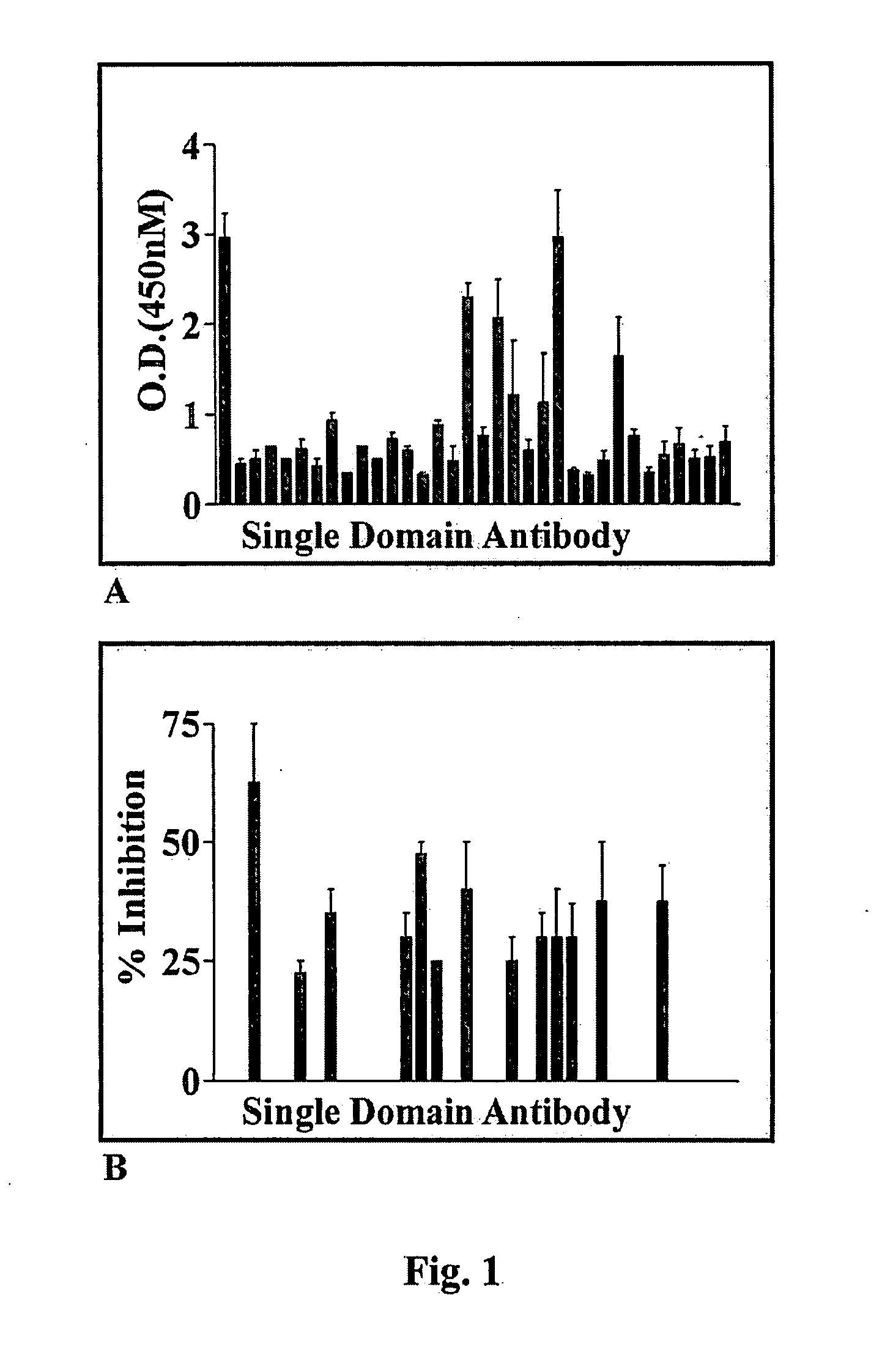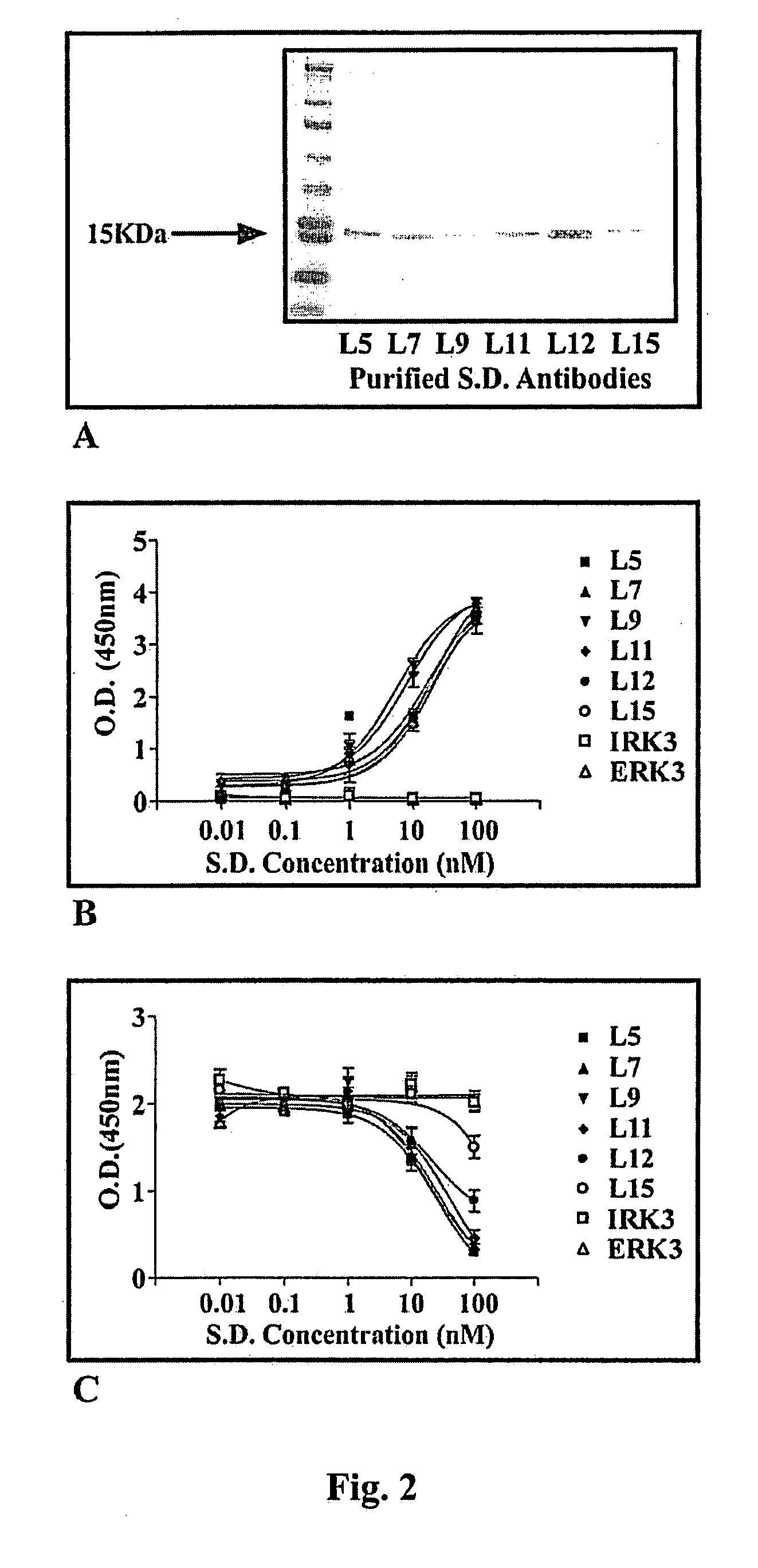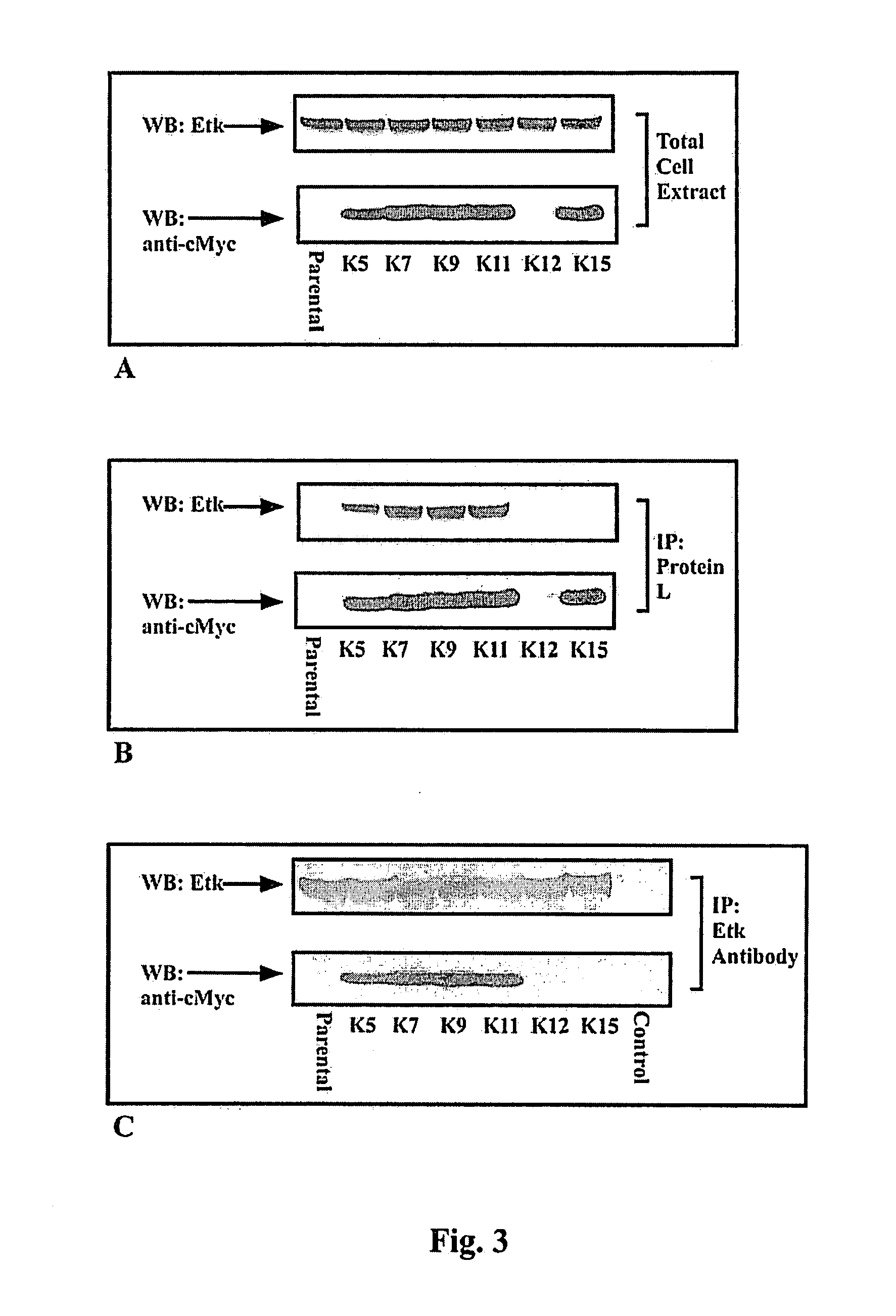Intrabodies
a technology cytokine, which is applied in the field of intracellular enzyme activity, can solve the problems of instability and tendency to aggregate, instability or incorrect folding of intracellular proteins, and the use of intracellular proteins remains problematic, and achieves the effects of inhibiting intracellular enzyme activity, treating or ameliorating, and inhibiting cell transformation
- Summary
- Abstract
- Description
- Claims
- Application Information
AI Technical Summary
Benefits of technology
Problems solved by technology
Method used
Image
Examples
examples
[0077]Library, Cells and Reagents.—A human domain antibody phage display library was obtained from Domantis (Cambridge, UK). NSR cells (mouse NIH3T3 cells over-expressing v-Src) were a gift from Dr. J. E. Darnell (Rockefeller University, New York, N.Y.). ATP, proteases inhibitor cocktail, 3-(4,5-dimethylthiazol-2-yl)-2,5-diphenyltetrazolium bromide (MTT), glutathione beads, tetracycline, trypsin and polyEY were purchased from Sigma Chemicals Co. (St. Louis, Mo.). Isopropyl-1-thio-β-D-galactopyranoside (IPTG), monoclonal anti-Myc-horseradish peroxidase (HRP) conjugate, low melting agar, Geneticin G418, NuPage polyacrylamide gel and transfer system, Lipofectamine 2000 and OptiMEM were from Invitrogen (Carlsbad, Calif.). Anti-M13-HRP antibodies and 33P-γATP were from Amersham (Piscataway, N.J.). Monoclonal pY20 antibodies were obtained from Oncogene-EMD Biosciences (San Diego, Calif.). Polyclonal Etk antibodies were from Cell Signaling (Beverly, Mass.). Glutathione-S-transferase (GST) ...
PUM
| Property | Measurement | Unit |
|---|---|---|
| Therapeutic | aaaaa | aaaaa |
| Enzyme activity | aaaaa | aaaaa |
Abstract
Description
Claims
Application Information
 Login to View More
Login to View More - R&D
- Intellectual Property
- Life Sciences
- Materials
- Tech Scout
- Unparalleled Data Quality
- Higher Quality Content
- 60% Fewer Hallucinations
Browse by: Latest US Patents, China's latest patents, Technical Efficacy Thesaurus, Application Domain, Technology Topic, Popular Technical Reports.
© 2025 PatSnap. All rights reserved.Legal|Privacy policy|Modern Slavery Act Transparency Statement|Sitemap|About US| Contact US: help@patsnap.com



